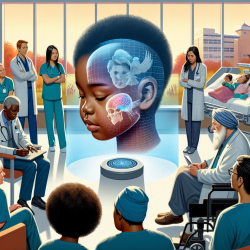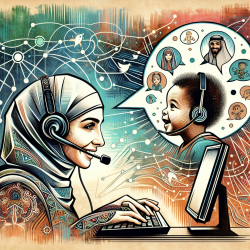Introduction
In the realm of pediatric care, understanding the nuances of facial asymmetry is crucial for clinicians aiming to improve therapeutic outcomes. The study titled "Identifying Three-Dimensional Facial Fluctuating Asymmetry in Normal Pediatric Individuals: A Panel Assessment Outcome Study of Clinicians and Observers" provides valuable insights into the perceptions of facial asymmetry across different observer categories, including clinicians and laypersons. This blog explores how practitioners can utilize these findings to enhance their clinical practices and encourage further research in this domain.
Understanding Facial Asymmetry
Facial asymmetry is a natural occurrence, characterized by slight deviations in symmetry across the face. This study, conducted on 600 healthy Taiwanese children aged 6 to 12, reveals that the average facial fluctuating asymmetry is 0.96 ± 0.52 mm. The research stratifies asymmetry into four levels of severity, providing a baseline for assessing and comparing facial asymmetry in pediatric populations.
Panel Assessment and Its Implications
The study employed a panel assessment approach, involving 20 clinicians, 20 adult observers, and 40 pre-adolescent observers, to evaluate perceptions of facial asymmetry. Significant differences were noted in the symmetry-asymmetry scale values across the levels of severity, highlighting the importance of diverse perspectives in clinical assessments.
- Level I: Pre-adolescent observers perceived higher asymmetry than adult observers.
- Levels II-IV: No significant differences in perception among different observer categories.
Clinical Applications and Recommendations
For practitioners, these findings underscore the importance of considering multiple perspectives when assessing facial asymmetry in children. Here are some practical applications:
- Enhanced Diagnostic Accuracy: Incorporate diverse observer feedback to improve the accuracy of asymmetry assessments.
- Tailored Treatment Plans: Use severity levels as benchmarks for designing personalized treatment plans.
- Improved Patient Communication: Educate patients and families about the normalcy of facial asymmetry, reducing anxiety and fostering acceptance.
Encouraging Further Research
While this study provides a foundational understanding of facial asymmetry, further research is needed to explore its implications across different ethnic groups and age ranges. Practitioners are encouraged to engage in collaborative research efforts to expand the existing database of 3D facial asymmetry values, ultimately enhancing the quality of pediatric care.
Conclusion
By leveraging the insights from this study, practitioners can refine their diagnostic and treatment approaches, leading to improved outcomes for pediatric patients. Embracing data-driven decisions and fostering interdisciplinary collaboration will pave the way for advancements in the field of speech language pathology and beyond.
To read the original research paper, please follow this link: Identifying Three-Dimensional Facial Fluctuating Asymmetry in Normal Pediatric Individuals: A Panel Assessment Outcome Study of Clinicians and Observers.










